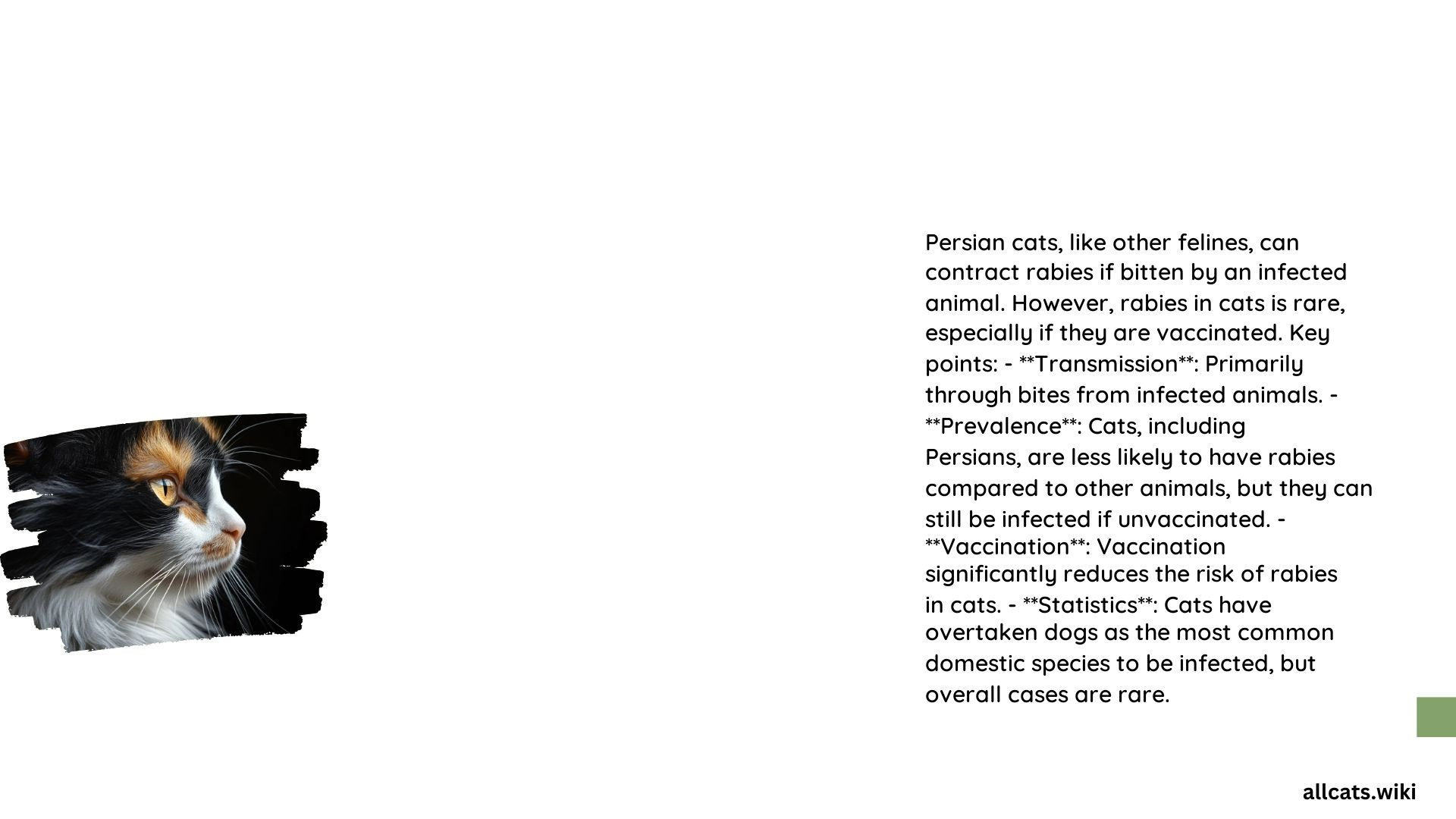Risks and Transmission of Rabies in Persian Cats

What is the Transmission Mechanism of Rabies in Persian Cats?
Rabies is primarily transmitted through the bite of an infected animal, where the saliva containing the rabies virus is introduced into the body of another animal. Persian cats, like other felines, can contract rabies if bitten by an infected animal, such as dogs, raccoons, skunks, bats, or other wildlife.
How Likely is the Transmission of Rabies to Persian Cats?
The risk of transmission is higher for cats that are allowed to roam outdoors, as they are more likely to encounter infected wildlife or other animals. Indoor cats are at lower risk, but they can still be exposed if infected animals enter the home.
What are the Symptoms of Rabies in Persian Cats?
The initial symptoms of rabies in Persian cats include changes in behavior, such as aggression, lethargy, and restlessness, as well as loss of appetite, weakness, increased vocalization, and disorientation. As the disease progresses, symptoms can include paralysis, seizures, and eventually sudden death. The symptoms can appear as early as 10 days after the bite and as late as a year, depending on the severity of the bite and the location of the wound.
What is the Rabies Vaccination Schedule for Persian Cats?
Vaccination is the key to preventing rabies in cats, and it is highly recommended to vaccinate all cats, including Persian breeds, against rabies. The typical vaccination schedule for kittens includes an initial rabies vaccine at 12 to 16 weeks of age, followed by a booster shot one year later, and then regular boosters as recommended by local regulations or veterinary advice. Rabies vaccinations are highly effective in preventing the disease if administered correctly and before exposure to the virus.
What is the Risk of Rabies Transmission to Humans from Persian Cats?
A bite from a rabid cat can transmit the virus to humans, as the virus is present in the saliva of infected cats, and human exposure can occur through bites or scratches. If a vaccinated cat is bitten by a rabid animal, it may still develop rabies if the vaccine is not up to date or if the exposure is severe. However, the risk is significantly lower for vaccinated cats compared to unvaccinated ones.
What Preventative Measures Can Be Taken to Reduce the Risk of Rabies in Persian Cats?
To prevent the risk of rabies in Persian cats, it is important to ensure that your cat is up to date on all recommended vaccinations, including the rabies vaccine. Additionally, keeping your cat indoors can reduce the risk of exposure to infected wildlife or other animals. Avoiding contact with wild animals, such as raccoons, bats, and skunks, which are common carriers of the rabies virus, is also crucial. Monitoring your cat’s behavior for any changes can help in early detection of symptoms, although treatment is generally not possible once symptoms appear.
References

